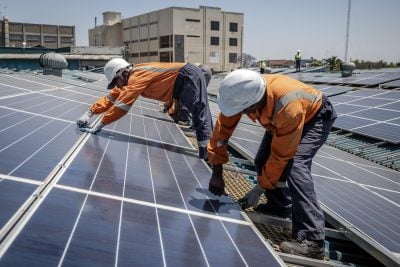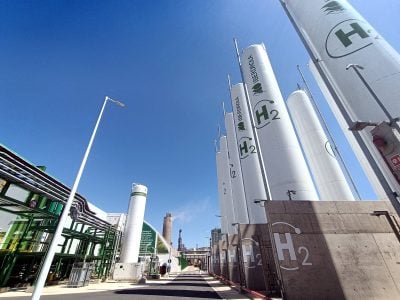Zambia recent economic performances have been impressive especially as the non-mining sectors, such as construction and manufacturing have continued to expand. The growth momentum, writes Nawa Mutumweno, is expected to gather pace this year.
The outlook for the Zambian economy remains favourable in the medium term, underpinned by robust growth and single-digit inflation. The economy is projected to grow 7.3% in 2013, albeit with vulnerability to external shocks on the backdrop of a sluggish global economy recovery.
Growth indicators appear favourable anchored on sustained expansion in agriculture, construction, manufacturing, transport and communications, and a rebound in mining. However, some economic analysts have contended that maintaining investor confidence has emerged as a key issue after the government reversed the privatisation of Zamtel.
Agriculture has been robust in recent years, producing bumper harvests since 2009, with maize doing particularly well. Non-maize production, however, is gaining momentum, reflecting increasing diversification in the sector. To address infrastructure deficiencies, the government has increased the agriculture budget allocation, with the bulk of the funding going to the Farmer Input Support Programme (FISP) and crop purchases for the strategic food reserve. Other key areas worthy of mention are development of irrigation infrastructure, and livestock, fisheries and aquaculture.
Output in the mining and quarrying sector fell 0.7% in 2011 as uncertainty over the outcome of presidential elections saw investment decisions on major projects deferred, according to the Africa Economic Outlook 2012. As a result, copper output dipped 2.2%. With the elections having gone smoothly, mining investment have now picked up. The mining sector subsequently grew 10.6% in 2012 and is expected to be at 10.3% in 2013.
The construction sector has been pivotal to Zambia’s growth in recent years, accounting for about 21.1% of the economy. With the continued rebound in mining activity and increased public expenditure on infrastructure, the sector’s growth rate is pegged at 17% in 2013.
Growth in transport and communications slowed to 12.7% in 2011 from 15% in 2010, mainly due to problems with railway infrastructure and slower growth in air transport and communication. A plus for the sector comes with the recapitalisation of Zambia Railways Limited and the opening up of regional flights by Proflight. Fortunes for the sector should improve for the better if plans to establish a national airline mature.
Strong growth in manufacturing
The country’s prospects for sustained growth depend on increased economic diversification, away from mining. The manufacturing sector is especially cardinal to the long-term growth and employment strategy.
In the recent past, manufacturing growth has been 5%, in line with industry estimates, but the sector accounted for 9.1% of the economy in 2011. Growth was mainly driven by increased investment, particularly in agroprocessing, in response to prudent economic management and business reforms. Sustained growth in manufacturing and other sectors depends on improved access to affordable finance and continued implementation of structural reforms to spur private sector participation.
High interest rates remain a barrier to accessing credit, especially for small businesses. In a bid to reduce lending rates, the government cut the corporate tax rate in the banking sector from 40% to 35%.
Additionally, the central bank lowered the statutory reserve ratio requirements to 5% from 8% to free up more of the commercial banks’ resources for private sector lending. At the same time, however, the government increased the bank sector’s minimum capital base to K104bn ($19.5m) for local banks and K520bn ($97.6m)for foreign banks, from the previous K12bn ($2.3m) across the industry.
Following the expiry of Zambia’s Extended Credit Facility (ECF) agreement with the IMF in June 2011, discussions on a new arrangement are in progress. During the ECF period, Zambia’s economic performance and policy management were deemed satisfactory and in line with agreed benchmarks. Accordingly, the World Bank reclassified Zambia as a lower middle-income country and it secured a B+ credit rating from Fitch and Standard and Poor’s. The need for these gains to be consolidated for the country’s growth to be inclusive cannot be over-emphasised.
The expected widening of the public deficit in 2012 reflects the new government’s policy of increased expenditure on social and infrastructure development. Domestic revenues fell to 13.6% of GDP in 2012, largely due to an increase in the tax relief granted to low-income earners. To partly cushion the impact of this measure, the government raised the mineral royalty rate to 6% from 3%. The main challenge for fiscal policy remains that of widening the tax base, increasing the tax take from the mining sector and allocating these resources to productive uses.
Vision 2030 and the Sixth National Development Plan (SNDP) continue to provide overall guidance in fiscal management. The proposal to remove copper and cobalt ores and concentrates from the Import VAT Deferment Scheme should significantly enhance revenue mobilisation efforts.
Regional integration and trade
Zambia remains committed to a liberal trade regime and efforts to deepen this process further have continued through regional and multilateral arrangements. This is important in promoting export-led growth and economic diversification. The country hosts the headquarters of COMESA and remains active in SADC, being a founder member of both groupings.
In 2013, a recovery in the global economy will benefit metal prices and revive demand for Zambia’s non-traditional products, which should boost the current account surplus to 4.0% of GDP. There is growing concern that the dominance of the extractive sector in Zambia’s exports is a major source of vulnerability and efforts to diversify away from its traditional reliance on copper should be accelerated.
Zambia’s risk for external debt distress remains low, mainly because of the Government’s cautious approach following a significant reduction in borrowings under the Heavily Indebted Poor Countries (HIPC) and Multilateral Debt Relief initiatives of 2005 and 2006 respectively. These initiatives significantly improved Zambia’s external debt sustainability, with the debt service to export ratio falling to less than 4% in 2011 from 11% in 2005. In 2011, the government contracted some $505m to finance infrastructure projects, compared with debt repayments of $200m that year.
In 2012, the government issued a $700m bond to cover an infrastructure finance gap estimated at $500m. This has definitely increased Zambia’s external debt but the current levels of economic growth make it sustainable. Since 2004, the government has been implementing institutional and other structural reforms in line with the Private Sector Development Reform Programme (PSDRP), which aims to improve the business environment, encourage competitiveness and promote export diversification.
These reforms have paid off with improvements in the general business environment. In 2010, the World Bank hailed Zambia as one of the best reformers in Africa. However, risks to further progress remain and there has been some slippage. In the recent World Bank Ease of Doing Business survey, Zambia dropped to 84 from 80 in the overall rankings. At the same time, Zambia was ranked eighth, second only to South Africa on the continent, on ease of obtaining credit. The government has also embarked on a programme to harmonise business sector legislation.
Zambia has held democratically contested elections since 1991, culminating in the September 2011 polls won by the Patriotic Front (PF).
The country has ratified the UN Convention against Corruption and introduced a number of measures aimed at both preventing and prosecuting corrupt practices. In 2010, the government began work on legislation to protect ‘whistle blowers} and transformed the anti-fraud and money-laundering unit into the much stronger and independent Financial Intelligence Unit. The office of the Auditor General has improved the time it completes the audit process.
Indeed Zambia is on a developmental ascent. The results of the economic reforms introduced in 1991 when the country ditched the one-party system and replaced it with multi-parties, are now showing. The economic ‘fruit’ keeps on ‘ripening’
Want to continue reading? Subscribe today.
You've read all your free articles for this month! Subscribe now to enjoy full access to our content.
Digital Monthly
£8.00 / month
Receive full unlimited access to our articles, opinions, podcasts and more.
Digital Yearly
£70.00 / year
Our best value offer - save £26 and gain access to all of our digital content for an entire year!
 Sign in with Google
Sign in with Google 


